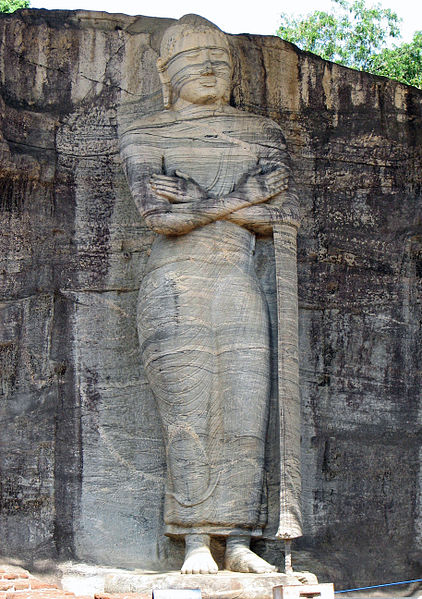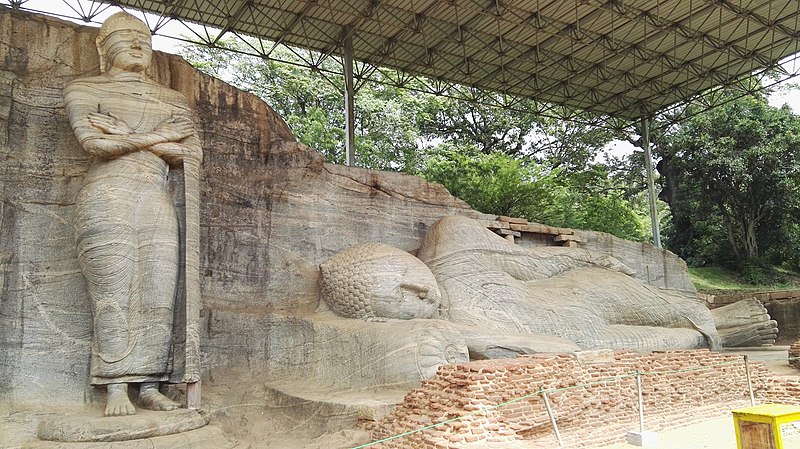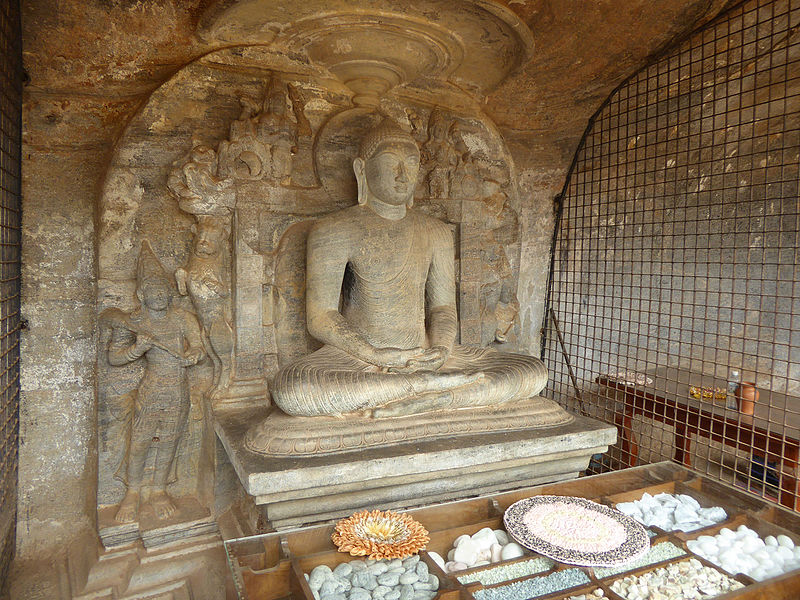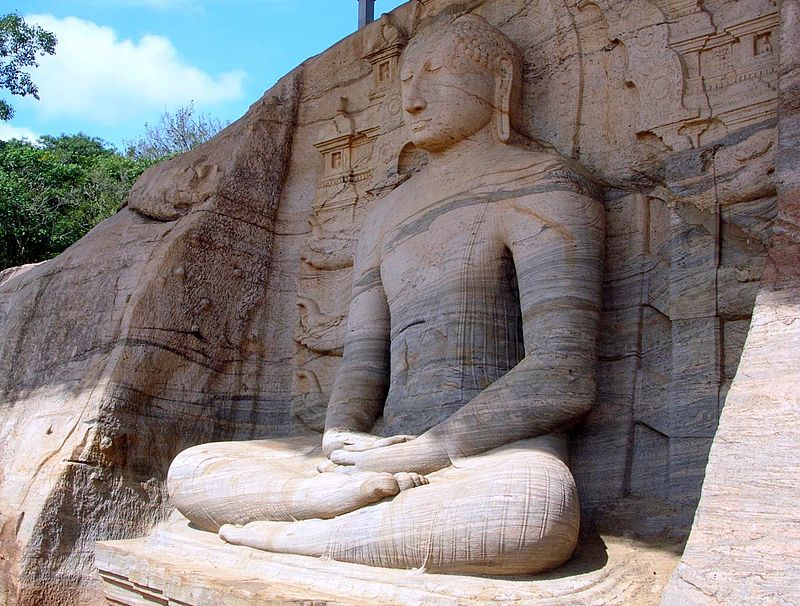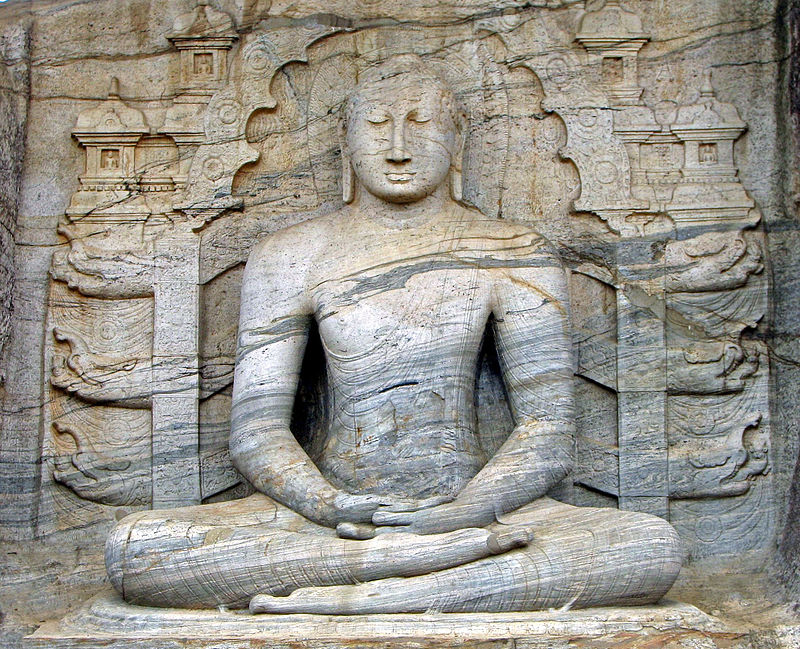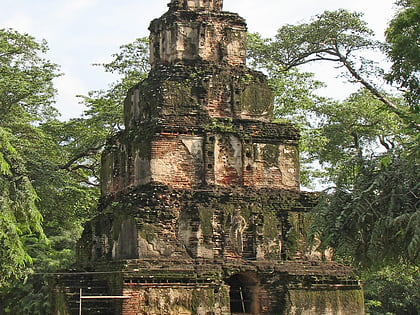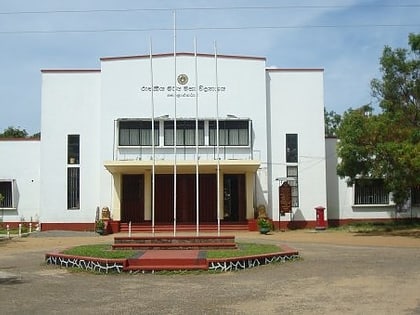Gal Vihara, Polonnaruwa
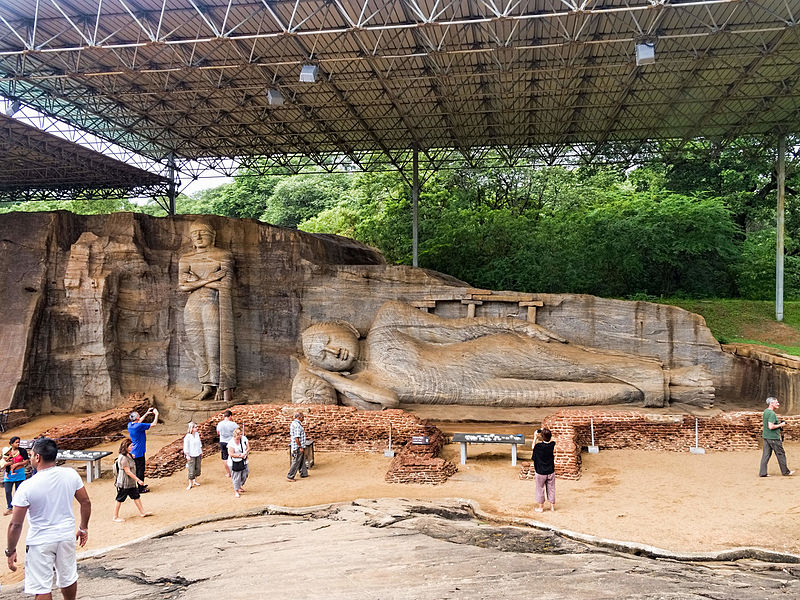
Facts and practical information
Gal Vihara, a rock temple of the Buddha situated in the ancient city of Polonnaruwa in Sri Lanka, stands as a testament to the country's rich cultural and religious history. Carved from a single, large granite rock face during the reign of King Parakramabahu I (1153–1186 AD), this impressive collection of Buddha statues is a pinnacle of Sinhalese rock carving.
The site comprises four separate images, all hewn out of the living stone: a large seated figure, a smaller seated figure inside an artificial cavern, a standing figure, and at the end, a reclining figure representing the Buddha's parinirvana, the final state of nirvana after death. Each sculpture is masterfully crafted, showcasing the artistry and spiritual depth of the time.
The central and largest statue is the seated Buddha, which measures over 15 feet in height, depicting the Dhyana Mudra, a meditative posture that signifies concentration. The expression of calm and serenity on the Buddha's face is a highlight of the sculpture, inviting contemplation and reverence from visitors.
The standing Buddha statue, reaching a height of over 22 feet, is interpreted by some scholars as a depiction of the Buddha's sorrow for the suffering of humanity. Its unusual posture and facial expression make it a subject of much study and admiration.
Gal Vihara's reclining Buddha, at 46 feet long, is perhaps the most dramatic, capturing the moment of the Buddha's entry into nirvana. The skill with which the sculptor has rendered the Buddha's serene composure and the flowing drapery of his robes is remarkable.
The temple complex is a UNESCO World Heritage Site and remains an important place of pilgrimage for Buddhists. It also attracts tourists from around the world who come to marvel at the grandeur and craftsmanship of these ancient sculptures.
Gal Vihara – popular in the area (distance from the attraction)
Nearby attractions include: Satmahal Prasada, Rankoth Vehera, Nissanka Latha Mandapaya, Vatadage.


